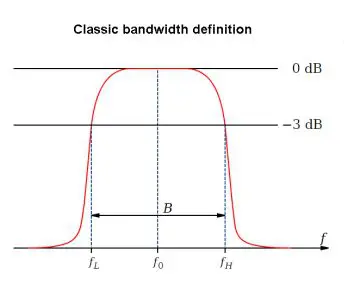The bandwidth specification in an oscilloscope is applicable to digital as well as analog instruments. Early oscilloscopes, or more properly oscillographs, consisted of a magnetically-driven pen that would ink a trace on a turning paper cylinder, which provided the time base. Frequency response, of course, was severely limited by the mass and inertia of the pen and connected linkage, so maximum bandwidth was quite low.
In an effort to boost the bandwidth, oscilloscope builders soon moved away from the moving pen model. A vibrating mirror or the surface of a reflective liquid increased the frequency response dramatically, and cathode ray tube (CRT) technology made possible further advances.

Today bandwidth in the context of the oscilloscope is taken to mean the maximum frequency that can transverse the front end without significant attenuation, defined as 70.7% (-3 dB) of the original signal. This attenuation comes from the combined effects of inductive reactance, a series phenomenon that rises at higher frequencies, and capacitive reactance, a parallel phenomenon that drops at higher frequencies. The two conspire to increase impedance as frequency rises, and the combination limits bandwidth.
This attenuation takes place throughout an old-style analog oscilloscope, and also in the analog front end of a digital instrument. Sample rate and memory depth are also important issues in a digital oscilloscope, but for now we’re talking about bandwidth exclusively.
Bandwidth becomes important when two frequencies combine, as in AM or FM broadcast, where a lower-frequency audio signal modulates a higher frequency carrier. Bandwidth is relevant also when there is any signal other than a pure sine wave or dc as shown by a straight horizontal line in the display. An example is the square wave with enormously fast rise and fall times, generating powerful harmonics. In this instance there is a significant bandwidth because of the large amount of power in the harmonics outside the fundamental frequency.
Even restricting the discussion to electronics, bandwidth has several distinct, though related, meanings. In digital processing, it is taken to refer to the range of frequencies of a single signal, expressed in hertz. When the context shifts to computing, the focus becomes speed of data transfer, expressed in bits per second (bit/sec). In physics, spectral bandwidth is the width of an atomic or molecular line in the spectrum, here again measured in hertz.
In choosing an oscilloscope, bandwidth is of great importance and it figures prominently in the price. A buyer should select a model having a bandwidth far in excess of the highest frequency to be measured. However, don’t go overboard. It all depends upon the anticipated usage. Other parameters such as sampling rate and memory depth, as well as quality of the probes will need to be considered.

Leave a Reply
You must be logged in to post a comment.